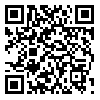Volume 17, Issue 1 (4-2022)
MGj 2022, 17(1): 17-29 |
Back to browse issues page
Associate Professor, Department of Biotechnology and Plant Breeding, Payame Noor University, Tehran, Iran
Abstract: (745 Views)
This study aimed to investigate the effect of zinc nano-chelate on vegetative characteristics and expression of genes affecting the synthesis of thymol and carvacrol in thyme. The experimental design was factorial in a completely randomized design with three replications. The first factor included two cultivars of thyme and the second factor was the foliar application of zinc nano-chelate at four levels (zero (control), 2.5, 3.5, and 4.5 mg/l). The results of the present study showed that the highest content of carotenoids was at the level of 4.5 mg /l and the highest content of caracrol essential oil was at the level of 2.5 mg /l nano-zinc chelate. The results of comparing the mean of interaction treatments also showed that both cultivars showed the highest plant dry yield, chlorophyll a and b content in response to spraying of 3.5 mg /l nano-zinc chelate. In this study, the highest thymol content of essential oil was recorded in the levels of 2.5 and 3.5 mg/l for Thymus vulgaris cultivars and Thymus Dena cultivars at the levels of 2.5 and 4.5 mg / L. The results showed that the effect of nano-chelate zinc foliar application on the expression of CYP71D180 and CYP71D178 genes was significant at the level of 1% and on the expression of DXR and CYP71D180 genes at the level of 5% probability. In this study, the level of 2.5 mg / l nano-zinc chelate increased the expression of DXR gene by 27.36% compared to the control treatment. Also, foliar application of two levels of 2.5 and 3.5 mg / l increased the expression of gamaterpinene synthase genes by 51.13% and 2.38%, expression of CYP71D180 gene by 36.31% and 42.28, and the expression of CYP71D178 gene by 61.70% and 36.34%, respectively.
Article number: 2
Type of Study: Applicable |
Subject:
Subject 01
Received: 2021/09/19 | Accepted: 2022/01/23 | Published: 2022/04/10
Received: 2021/09/19 | Accepted: 2022/01/23 | Published: 2022/04/10
| Rights and permissions | |
 |
This work is licensed under a Creative Commons Attribution-NonCommercial 4.0 International License. |


